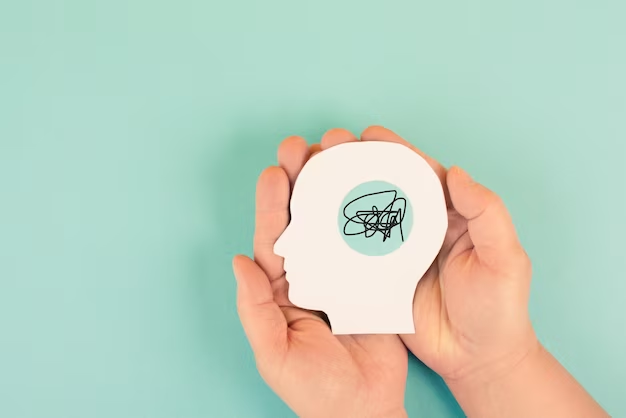Cognitive therapy is a well-known and efficient type of psychotherapy that relies on a crucial principle to guide its procedure and methods. It’s essential for both therapists and individuals seeking treatment to comprehend the fundamental basis of cognitive therapy. This piece explores this central principle, how it’s put into practice, and answers frequently asked questions about cognitive therapy or dynamic infusion therapy.
The Bedrock Principle of Cognitive Therapy

The fundamental principle of cognitive therapy is can be stated succinctly as:
“Our thoughts and beliefs about a situation significantly influence our emotional reactions and subsequent behaviors.”
The significance of cognitive processes in molding our mental health and well-being is highlighted by this principle. It suggests that if we become mindful of our thought patterns, and modify them whenever required, then we can enhance both emotional resilience as well as behavioral responses to maintain better health.
The Role of Cognitive Distortions
At the core of the fundamental principle lies cognitive distortions, which refer to flawed or irrational patterns of thinking that can cause negative feelings and problematic actions. Recognizing these distortions and confronting them is a crucial component in cognitive therapy. Below are some examples of common types of cognitive distortions:
- All-or-Nothing Thinking (Black-and-White Thinking): Black-and-white thinking, also known as all-or-nothing thinking, refers to the tendency of perceiving situations in absolute terms without any room for ambiguity. It involves categorizing things into two extremes such as “success” or “failure,” while ignoring anything that falls in between.
- Catastrophizing: Catastrophizing refers to a tendency towards envisioning the most dire consequences, even if they are improbable. This inclination may cause an excessive level of apprehension and distress in individuals.
- Mind Reading: The distortion of mind reading occurs when we make assumptions about the thoughts and intentions of others without any evidence, often leading to negative attributions.
- Personalization: Personalization is when individuals start feeling responsible for occurrences or consequences that are not under their control, causing them to experience unnecessary guilt or self-blame.
- Emotional Reasoning: Emotional reasoning refers to the tendency of using one’s feelings as proof for the validity of a conviction. For instance, assuming that “since I feel like an incompetent individual, it must be true”.
- Labeling and Labeling Others: When someone assigns negative epithets to themselves or others based on singular actions or happenings, they are engaging in labeling which often oversimplifies multifaceted circumstances.
- Should Statements: Statements that include the word “should” can create fixed and impractical expectations towards oneself or others, resulting in emotions of annoyance and bitterness.
- Selective Attention (Cherry-Picking): Selective Attention, also known as Cherry-Picking, refers to the phenomenon of individuals giving greater importance to evidence that aligns with their negative views and disregarding any opposing evidence.
- Overgeneralization: Making broad assumptions about oneself or the world based on isolated events is known as overgeneralization. An example of this would be assuming that all tasks will result in failure after experiencing one instance of it.
Challenging Cognitive Distortions
The objective of cognitive therapy is to recognize and confront these distorted thought patterns in an organized and evidence-supported manner. Clinicians partner with patients to:
- Recognize distortions: Clients learn to identify the occurrence and origin of distorted thought patterns in their thinking.
- Examine evidence: The therapists advise their clients to gather evidence supporting and opposing their negative thoughts, which helps in fostering a more balanced outlook.
- Generate alternative thoughts: Clients focus on creating logical and impartial perspectives of situations, promoting more flexible emotions and actions.
- Test beliefs through behavioral experiments: Therapists can facilitate clients in performing practical experiments to validate their beliefs, resulting in a more precise understanding of reality.
Application in Therapy Sessions

During cognitive therapy sessions, individuals collaborate with therapists to recognize and comprehend their thought patterns, particularly the ones that are aiding in causing distress. This process encompasses:
Identifying Negative Thoughts
During cognitive therapy sessions, the first step involves recognizing negative thoughts that are either causing discomfort or adding to emotional challenges. This stage is especially important as it helps individuals gain an understanding of their thinking patterns, identify triggers and appreciate how such ideas impact on both behavior and emotions. Some techniques used during this period may include:
- Thought Records: Therapists frequently utilize structured forms or worksheets known as thought records to aid clients in analyzing and documenting their thoughts relating to certain emotional experiences. These documents often feature designated columns for noting the situation at hand, automatic thoughts that arise from said situation, associated emotions felt by the individual, and evidence both supporting and contradicting those respective perspectives.
| Situation | Automatic Thoughts | Emotions | Evidence For | Evidence Against |
| Public speaking | “I’ll embarrass myself” | Anxiety, fear | Past successes | Preparation |
| – | – | – | – | Supportive friends |
- Socratic Questioning: In the process of Socratic questioning, therapists employ specific inquiries to stimulate clients into expressing their thoughts and emotions. This fosters greater mindfulness on behalf of the client with regards to their cognitive processes. To cite an example, a therapist might pose the question “What proof backs up your current belief?”
- Mindfulness: Employing mindfulness methods can aid people in observing their thoughts impartially. By practicing mindfulness, individuals become more adept at recognizing negative notions and attentively scrutinizing them without bias.
Challenging Distortions
After recognizing negative thoughts, the subsequent step is to counter cognitive distortions that are unreasonable or prejudiced manners of thinking causing emotional turbulence. These may comprise:
- All-or-Nothing Thinking: The tendency to view situations in absolute terms, either all good or all bad.
- Catastrophizing: Anticipating the most unfavorable result imaginable.
- Personalization: Perception that everything is centered around oneself.
Clients work together with therapists to examine their thoughts and determine whether they are grounded in reality or influenced by flawed perceptions. The steps involved in this approach entail:
- Reality Testing: One technique in therapy called reality testing involves prompting clients to evaluate the validity of their automatic thoughts. For instance, they may be encouraged to question whether there is factual evidence supporting a certain thought or if they are merely assuming something without sufficient grounds.
- Examining Alternatives: When considering options, therapists assist their clients in exploring alternative views of events, ideas and sentiments. This may involve examining multiple outlooks as well as evidence that opposes pessimistic convictions.
Developing New Perspectives
In the last step of cognitive therapy, people are assisted in cultivating thoughts that are realistic and well-balanced. This may consist of:
- Cognitive Restructuring: Through cognitive restructuring, individuals collaborate with therapists to transform their reflexive thoughts into ones that are more balanced and beneficial. An example of this is modifying the internal dialogue from “I am a disappointment” to “Although I have faced obstacles, I possess the capacity for growth and discovery.”
- Homework Assignments: Therapists usually give clients homework, which may include engaging in exposure exercises to face fears and challenge distorted beliefs in real-life situations, keeping thought journals, or practicing positive self-talk.
- Positive Coping Strategies: Clients are taught and encouraged to employ constructive coping mechanisms, which enable them to handle challenging emotions and situations with efficacy. Among the strategies that may be utilized include techniques for promoting relaxation, skills necessary for problem-solving as well as training in assertiveness.
Impact on Various Mental Health Conditions
Cognitive therapy is not limited to one specific condition. Its principle is versatile and can be applied to a range of mental health issues, including:
Depression
Depression is a common mental health condition characterized by persistent feelings of sadness, hopelessness, and a lack of interest or pleasure in daily activities. Cognitive therapy has been proven to be highly effective in treating depression. Here’s how it works:
- Identifying Negative Thought Patterns: Cognitive therapy helps individuals recognize and challenge negative thought patterns that contribute to their feelings of hopelessness and low self-esteem. These thought patterns often involve self-criticism, pessimism, and feelings of worthlessness.
- Restructuring Negative Beliefs: Therapists work with patients to reframe their negative beliefs and replace them with more balanced and realistic thoughts. This process helps individuals develop a more positive self-perception and outlook on life.
- Developing Coping Strategies: Cognitive therapy equips individuals with practical coping strategies to manage their depressive symptoms. These strategies include problem-solving skills, stress management techniques, and relaxation exercises.
- Preventing Relapse: CBT not only helps alleviate current depressive symptoms but also provides individuals with the tools to prevent relapse. By recognizing early warning signs and employing coping strategies, patients can maintain their mental well-being.
Anxiety Disorders
Anxiety disorders encompass a range of conditions characterized by excessive worry, fear, and anxiety. These disorders often involve irrational thoughts that can be magnified by distorted thinking patterns. Cognitive therapy is highly effective in addressing and managing anxiety disorders:
- Identifying Irrational Thoughts: Cognitive therapy helps individuals identify and challenge irrational thoughts and beliefs that contribute to their anxiety. These thoughts often involve catastrophic thinking, overestimation of threat, and perfectionism.
- Gradual Exposure: Therapists may use techniques such as gradual exposure to help individuals confront their fears in a controlled and systematic manner. This exposure desensitizes patients to anxiety-provoking situations.
- Relaxation and Stress Reduction: CBT includes relaxation and stress reduction techniques to help individuals manage the physical symptoms of anxiety, such as muscle tension and rapid heartbeat.
- Problem-Solving Skills: Cognitive therapy equips individuals with problem-solving skills to tackle real-life situations that trigger anxiety. This empowers them to approach challenges with a more rational and less anxious mindset.
Eating Disorders
Eating disorders, such as anorexia nervosa, bulimia nervosa, and binge-eating disorder, are complex conditions often linked to distorted body image and self-worth issues. Cognitive therapy can play a crucial role in the treatment of eating disorders:
- Addressing Dysfunctional Beliefs: Therapists work with individuals to address dysfunctional beliefs related to body image, weight, and self-worth. This involves challenging perfectionism, unrealistic standards, and the importance placed on appearance.
- Developing Healthy Eating Habits: Cognitive therapy helps individuals establish a healthier relationship with food by addressing restrictive or binge-eating behaviors. This includes developing mindful eating habits and a more balanced approach to nutrition.
- Coping with Emotional Triggers: Emotional triggers often contribute to disordered eating patterns. CBT equips individuals with strategies to cope with emotional distress in ways other than turning to food.
- Building Self-Esteem: By challenging negative self-perceptions and working on self-acceptance, cognitive therapy can help individuals with eating disorders improve their self-esteem and overall well-being.
Tools and Techniques Used in Cognitive Therapy
Cognitive therapy employs various tools and techniques to help individuals change their thought patterns. These include:
Cognitive Restructuring
Cognitive restructuring is a fundamental technique in cognitive therapy. It involves challenging and altering negative thought patterns that contribute to emotional distress and problematic behavior. The process typically consists of the following steps:
- Identifying Negative Thoughts: The first step is to become aware of negative or irrational thoughts. Clients are encouraged to pay attention to their inner dialogue and identify thoughts that lead to distressing emotions.
- Evaluating the Evidence: Once negative thoughts are identified, individuals are taught to critically evaluate the evidence supporting these thoughts. They are encouraged to ask questions like, “Is there concrete evidence to support this thought?” or “What are the alternative interpretations?”
- Generating Alternative Thoughts: Clients work on generating more balanced and realistic alternative thoughts. This step involves reframing negative thoughts into more rational and constructive ones.
- Testing Beliefs: Individuals then put these alternative thoughts to the test in real-life situations. This is where cognitive restructuring intersects with behavioral experiments.
Behavioral Experiments
Behavioral experiments are a powerful tool used in cognitive therapy to test the validity of one’s beliefs and assumptions through real-world experiences. This technique involves creating controlled situations to challenge and modify thought patterns. The key components of behavioral experiments include:
- Hypothesis Formulation: Therapists help clients formulate specific hypotheses about their thoughts and beliefs. For example, if a person believes they are “always incompetent,” a hypothesis could be that they can successfully complete a task.
- Experiment Design: Together, therapist and client design experiments that will test the hypothesis. This might involve setting up situations where the client can gather evidence that supports or contradicts their negative beliefs.
- Data Collection: During and after the experiments, clients collect data to evaluate the accuracy of their beliefs. This data-driven approach helps individuals see the real-world consequences of their thoughts.
- Discussion and Learning: Clients and therapists review the results of the experiments, helping individuals gain insights into the accuracy of their beliefs and fostering a shift towards more adaptive thinking.
Mindfulness and Relaxation Techniques
In addition to cognitive restructuring and behavioral experiments, cognitive therapy often incorporates mindfulness and relaxation techniques to reduce stress and enhance self-awareness. These techniques can help individuals gain better control over their thoughts and emotions. Key techniques include:
- Mindfulness Meditation: Clients are guided to practice mindfulness meditation, which involves paying non-judgmental attention to the present moment. This cultivates awareness of thoughts without attaching excessive emotional reactions to them.
- Progressive Muscle Relaxation: Progressive muscle relaxation helps individuals release physical tension, which often accompanies negative thought patterns and anxiety. It involves tensing and then relaxing different muscle groups systematically.
- Deep Breathing Exercises: Deep breathing techniques promote relaxation and reduce the physiological arousal associated with stress and anxiety. Controlled breathing can help individuals regain focus and composure.
- Mindful Journaling: Keeping a journal to document thoughts and emotions can enhance self-awareness. It allows clients to identify patterns and triggers for negative thinking.
Interactive Exercises
Interactive exercises play a crucial role in making cognitive therapy principles practical and applicable in everyday life. These exercises engage clients in active participation and reinforce the therapeutic concepts. Some notable interactive exercises include:
- Thought Diaries: Clients maintain thought diaries where they record negative thoughts, identify cognitive distortions, challenge these distortions, and document the outcomes of cognitive restructuring efforts.
- Role-Playing: Role-playing scenarios are used to help individuals practice new communication and problem-solving skills. It allows clients to experiment with alternative ways of interacting in challenging situations.
- Homework Assignments: Therapists often assign homework exercises to clients, encouraging them to apply what they’ve learned in therapy to real-life situations. This fosters self-directed change and reinforces therapeutic progress.
Conclusion
Grasping which principle underlies cognitive therapy opens the door to a powerful tool in mental health treatment. This principle, emphasizing the role of thought patterns in influencing emotions and behaviors, is the keystone of cognitive therapy. Its versatility and effectiveness are evident across various mental health conditions, making it a cornerstone in the field of psychotherapy.
Understanding and applying the principle underlying cognitive therapy can lead to profound changes in how individuals perceive and react to their world, offering a path to improved mental well-being and a more fulfilling life.
FAQ
Q1: Can cognitive therapy help with long-standing mental health issues?
A1: Yes, cognitive therapy is effective for both acute and chronic mental health conditions, emphasizing the adaptability of the principle underlying cognitive therapy.
Q2: Is cognitive therapy suitable for children and adolescents?
A2: Absolutely, cognitive therapy can be tailored to suit all age groups, with modifications to suit developmental levels.
Q3: How long does cognitive therapy typically take to show results?
A3: The time frame varies depending on individual circumstances, but many people notice improvements within a few weeks of understanding and applying the principle underlying cognitive therapy.








+ There are no comments
Add yours